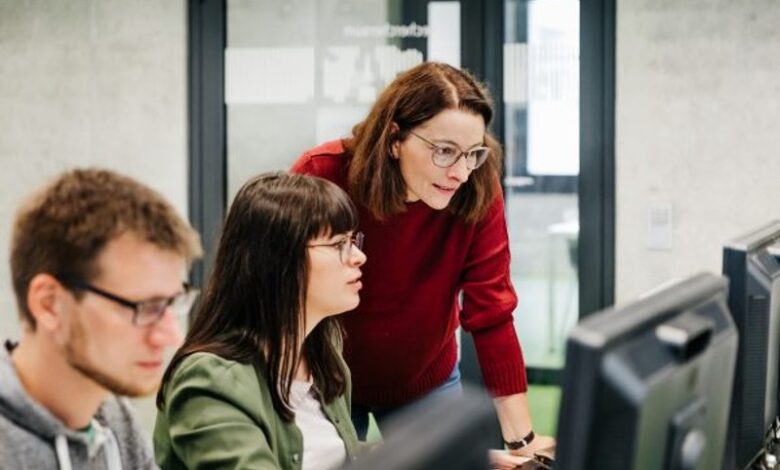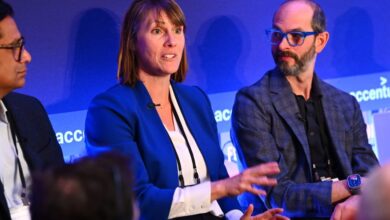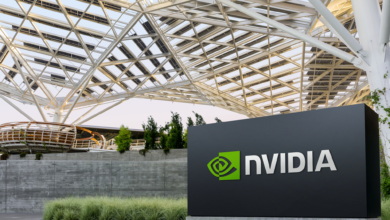Opinion: Artificial Intelligence Has Big Potential in Education, But Teachers Must Be Ready

Norah Dann, a 15-year-old student Grossmont High School student, is ambivalent about artificial intelligence.
After using Adobe Firefly, for example, to scroll through its 300 million images and come up with something new, she said, “It was not interesting in any way. It lacked creativity and had a formulaic quality about it.” Another attempt, to create a short story about a cat by prompting Chat GPT with instructions, was even less innovative. After all, a cat named “Whiskers”?
“I found as an image generator; it didn’t add anything,” said Norah. “It came up with very generic stuff.” Still, apart from some ethical reservations about using AI prompts, such as ChatGPT, Co-Pilot, BARD and META, to write fiction and compose music, she remains open to the possibilities AI provides.
The problem: Many teachers aren’t.
A recent survey of 450 schools and universities by UNESCO found that less than 10% have developed any policy covering the use of AI in education. A consensus of several other surveys indicates while 50% of public schools use AI in their admission process, only 10% of public school teachers have adopted any form of AI tools in the classroom. In contrast, 38% percent of private schools already use AI, while another 43% plan to adopt it this year.
Francis Parker, a private San Diego school, goes further. In November, Parker hosted a gathering of students’ parents and grandparents to acquaint them with the use of AI in the classroom. Denver Guess, the school’s director of curriculum alignment and instructional practice, emphasized how platforms like ChatGPT are not just tools to answer questions; they can boost learning. To illustrate his point, he asked adults in the room to hark back to their school days and share the technologies that they may have used, such as overhead projectors and pagers.
“AI can be a valuable educational tool when used responsibly and guided by teachers,” he told the audience.
However, artificial intelligence is more than pumping questions into a content creator like ChatGPT or META. Think of it as a field of computer science that creates systems to perform tasks such as problem solving and decision making that would ordinarily require human intelligence.
AI uses algorithms to pore over vast amounts — say billions — of pieces of information furnished by sources ranging from Google to your local telephone company. Then, based on the patterns it finds, the AI makes predictions. The process is called machine learning. Deep learning, a subset of machine learning, then mimics the human brain by using algorithms to create an artificial neuron network that will take the data it collects and convert it to a complex act, ranging from playing games to diagnosing cancer.
In addition to understanding data and solving difficult problems, AI can be used to explore future careers. It is for that reason precisely that Peter Sibley, CEO of Journeys Map, a San Diego firm that matches student aptitude with potential careers, and Drew Schlosberg, a Classroom of the Future Foundation advisory board member, lobbied to include artificial intelligence as an integral topic of this year’s CFF College and Career Pathways Summit held at National University in late February.
“We can’t call ourselves the Classroom of the Future Foundation if we don’t have in our summit a major footprint on the educational system,” said Schlosberg. “The schools are working very hard to close the equity gap.”
In addition to Sibley, students and teachers heard from Sai Huda, CEO of Cyber Catch, a security firm; and Dr. Patrick Gittisriboongul, assistant superintendent of technology and innovation for the Lynwood Unified School District in Los Angeles. Gittisriboongul is also former assistant superintendent of innovation for the San Diego County Office of Education.
“Kids cannot afford to miss the boat,” said Gittisriboongul. “I would tell them that in some shade, way or form, AI will make its way into what they are doing. Already, AI is generating music. It’s an AI world, whether you think you are using it or not.”
The Classroom of the Future Foundation, under the auspices of the San Diego County Office of Education, was created in 1997 to serve as a regional technology hub that would shape the future for the county’s public schools — a future replete with “better jobs.” That’s the best way to “help underserved students get out of poverty,” said Jane Schlosberg, director of development and operation for the foundation. Despite the Office of Education and the foundation’s best efforts, that may not be as easy at it sounds. For example, one might ask: What jobs?
The magazine US News & World Report authoritatively offers these top ten: nurse practitioner, financial manager, software developer, IT manager, physician assistant, medical and health services manager, security specialist, data scientist, actuary and speech language pathologist. Another job expert, Indeed.com, has its own top ten: mental health technician, loan officer, mental health therapist, electrical engineer, construction project manager, mechanical engineer, psychiatrist, human resources manager, senior accountant and data engineer.
According to Sibley and Gittisriboongul, the top-ten future jobs may not be on either list. They should know. Gittisriboongul went from web developer to teacher when he was laid off during the dot-com bust. Sibley took the opposite path. Before he went on to own three companies, including one of the world’s largest repositories of academic standards, he was the dean of computer science at National University. After leaving he became an entrepreneur and was named the San Diego Business Journal’s CEO of the Year in 2023.
“When you ask students today what they want to be,” said Sibley, “the top professions you always hear are lawyers, engineers, health care workers.” However, according to him, these jobs are not what the future may hold. “Kids are told: ‘Follow your passion.’ The only problem is most people don’t know their passion,” he added.
“That may be the one thing that AI can be useful for.”
Leonard Novarro is vice president of the Asian Heritage Society and author of WORDSLINGER: The Life and Times of a Newspaper Junkie. Rosalynn Carmen is president of the society and an AWS Certified Machine Learning Specialty and AWS Certified Dev Ops Engineer Professional.




